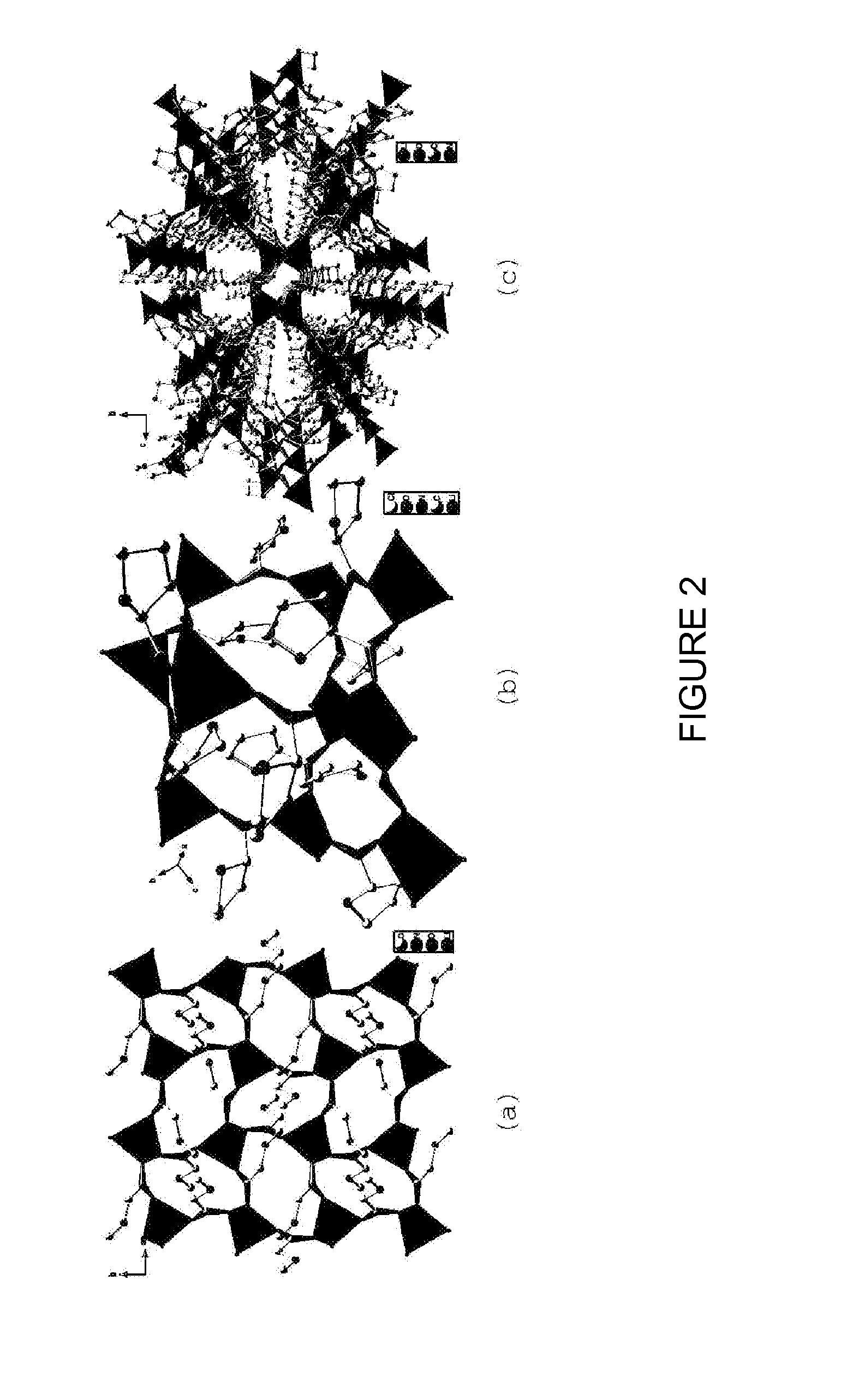Lithium compositions
a technology of compositions and lithium, applied in the field of lithium compositions, can solve the problems of compound extreme moisture sensitive, not all existing zeolitic metal-organic materials are water-stable,
- Summary
- Abstract
- Description
- Claims
- Application Information
AI Technical Summary
Benefits of technology
Problems solved by technology
Method used
Image
Examples
example 1
LINPRO2-Forms I & II 1:2 cocrystal of LiNO3 and L-proline
[0067]
[0068]Lithium nitrate (98%, anhydrous, used as received from Fluka, 413.4 mg, 6.0 mmol) and L-proline (99-F % pure, used as received from Acros Organics, 1381.2 mg, 12.0 mmol) were dissolved in 2.0 ml of hot deionised water. It was maintained on the hot plate until crystals emerged from the hot solution. Colorless plates (Form I, metastable form) were collected from the hot solution which in due course of time transform to 3-D rhombohedral crystals (Form II, 603 mg) once they are removed from the hot plate.
[0069]Melting point=176.1° C. (Form II).
[0070]Crystals of LINPRO2 Forms I and II were characterized by single crystal X-ray crystallography (Tables 1a and 1b). LINPRO2, Form II, crystals were also analyzed by FT-IR spectroscopy, DSC, TGA, and powder X-ray diffraction.
[0071]The single crystal x-ray structural analysis reveals that LINPRO2,
[0072]Form I (metastable form), contains two lithium cations, two nitrate anions a...
example 2
LIBPRO
[0073]
[0074]Lithium bromide, anhydrous (99% pure, used as received from Acros Organics, 1 g, 11.5 mmol) and L-proline (99-F % pure, used as received from Aldrich, 1.33 g, 11.5 mmol) were dissolved in 2.0 ml of hot deionised water. It was maintained on the hot plate until crystals emerged from the hot solution. Colourless block crystals (1427 mg) were harvested from the hot solution. Crystals of LIBPRO were characterized by FT-IR spectroscopy, DSC, TGA, powder x-ray diffraction and single crystal x-ray crystallography (Table 2).
[0075]Melting point=280° C.
[0076]The single crystal x-ray structural analysis reveals that LIBPRO contains four lithium cations, four bromide anions, four L-proline molecules and four water molecules in the unit cell. Three carboxylates bridge one lithium cations to form a chain of fused six-membered rings. The tetrahedral coordination environment of the lithium cations were achieved by three bridging carboxylates and a water molecule. The bromide anion ...
example 3
LIBPRO2
[0077]
[0078]Lithium bromide (99+%, anhydrous, used as received from Acros Organics, 0.50 g, 5.76 mmol) and L-proline (99-F % pure, used as received from Acros Organics, 1.33 g, 11.5 mmol) were dissolved in 2.0 ml of hot deionised water. It was maintained on the hot plate until crystals emerged from the hot solution. Colourless block crystals (861 mg) were collected from the hot solution. Crystals of LIBPRO2 were characterized by FT-IR spectroscopy, DSC, TGA, powder x-ray diffraction and single crystal x-ray crystallography (Table 3).
[0079]Melting point=257° C.
[0080]The single crystal x-ray structural analysis reveals that LIBPRO2 contains four lithium cations, four chloride anions and eight L-proline molecules in the unit cell. Each lithium cation is bridged by four carboxylates to form a cationic dia net with hexagonal channels exhibiting diameters ranging from 10.2 Å to 12.6 Å, populated by the bromide anions. The framework is reinforced by hydrogen bonding between the carb...
PUM
| Property | Measurement | Unit |
|---|---|---|
| pressure | aaaaa | aaaaa |
| temperature | aaaaa | aaaaa |
| particle size | aaaaa | aaaaa |
Abstract
Description
Claims
Application Information
 Login to View More
Login to View More - R&D
- Intellectual Property
- Life Sciences
- Materials
- Tech Scout
- Unparalleled Data Quality
- Higher Quality Content
- 60% Fewer Hallucinations
Browse by: Latest US Patents, China's latest patents, Technical Efficacy Thesaurus, Application Domain, Technology Topic, Popular Technical Reports.
© 2025 PatSnap. All rights reserved.Legal|Privacy policy|Modern Slavery Act Transparency Statement|Sitemap|About US| Contact US: help@patsnap.com



